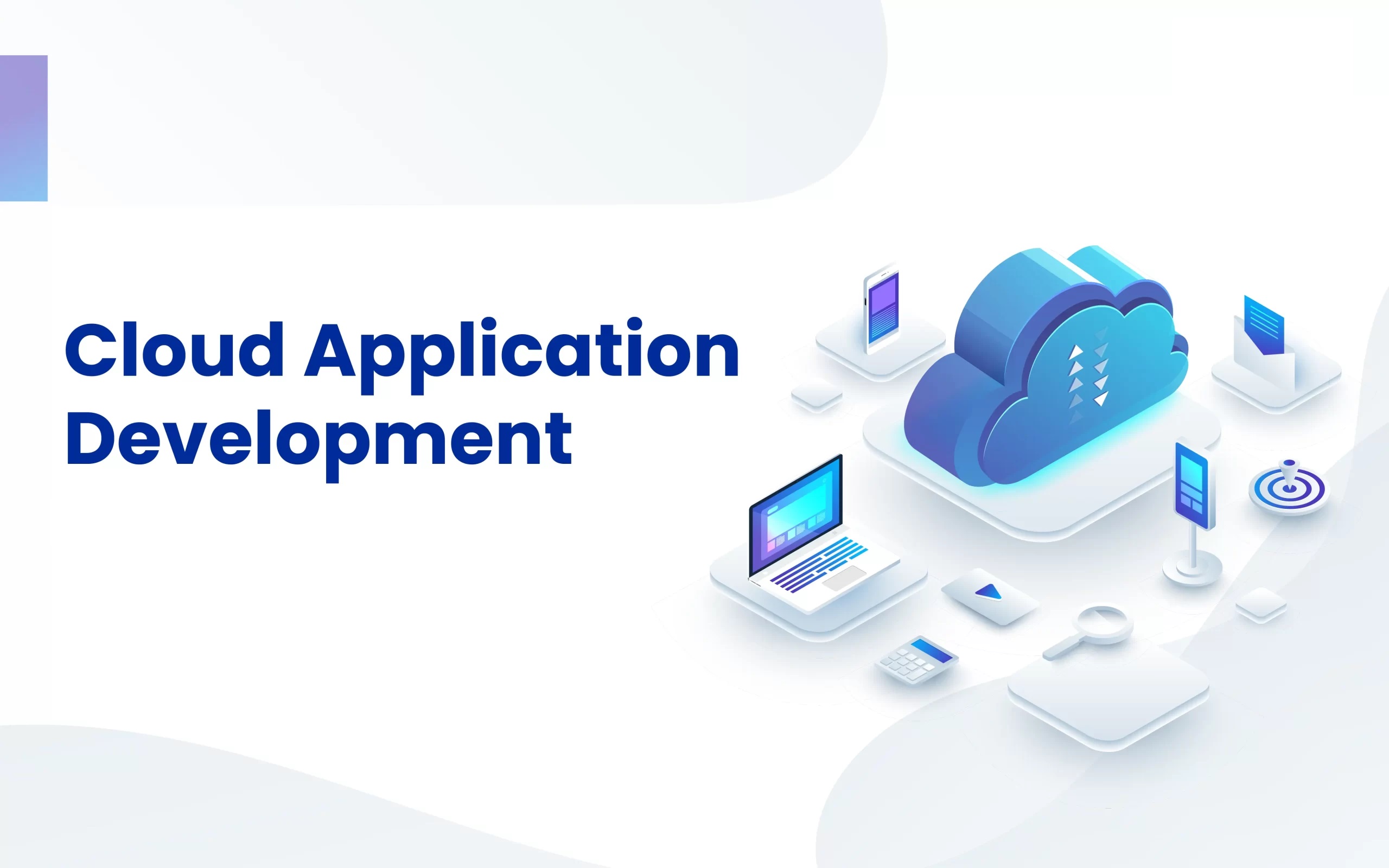Cloud app creation changes how we think about building, launching, and maintaining software. This change helps companies be more flexible, adaptable, and focused on data, crucial characteristics in our rapid digital world. As tech keeps progressing, top players like Pragmatic DLT use these advances to provide improved, advanced options.
This tutorial makes clear the complexities of building apps in the cloud and its strong effect on digital businesses in years to come. By looking closely at the key parts of cloud technology, we find that it makes businesses run smoother. Plus, it unlocks unmatched chances for development and fresh ideas in many sectors.
Understanding Cloud-Based Applications
Basically, cloud based application development is like an online tool. It works and saves information on distant servers. This lets you reach and control it from almost anywhere. Most of their activities are executed within the cloud environment. Your device, be it a computer or phone, is mainly a gateway to get in. You talk with the application using a web browser. A web browser is common for these technologies. This arrangement lessens the need for powerful local hardware. The server does the hard work.
Cloud apps have strong APIs. APIs let devices interact with cloud servers where data is stored. Devices don’t process workloads, they just show the interface and get user inputs. This lets data be managed efficiently without slowing devices down. It’s a smart way to separate tasks for cloud apps.
Overview of Various Types of Cloud Applications in Development
There are many kinds of cloud apps. They help businesses in different ways with specialized software development in cloud. Each app targets unique challenges and improves performance for various industries. Many types are being developed now. They aim to optimize processes, boost scalability, and increase accessibility. As these cloud apps grow, they keep transforming digital business environments. They provide robust solutions that meet changing market needs quickly.

Cloud-Based Web Applications
Cloud apps run on the internet. You can use them on any device that connects online. The apps and data are stored on remote servers. This lets users access tools and services from a web browser. For example, you can log in to Facebook or LinkedIn from anywhere. You can also work on files using Dropbox Paper or Google Docs. Cloud apps are handy for personal use and great for work. Teams in different places can collaborate easily.
People like cloud apps because they are accessible. But they also help people work together well. With data and tasks in the cloud, teams worldwide can work on projects at once. They don’t need to worry about syncing or version issues. Everyone sees updates right away and stays aligned. Cloud apps are flexible and let teams collaborate smoothly. This is key for modern businesses and individuals.
Customer Relationship Management (CRM)
CRM software aids companies in engaging with their customers. These programs manage marketing emails, leads, and customer lists. By combining these tasks in one place, CRM software lets businesses access and organize customer info easily. This way, every customer interaction is informed and planned.
Having all customer data together provides benefits. Businesses can better understand customer behavior and interests. They can then improve service, create personal experiences, and make customers happier. Overall, by enhancing customer interactions, businesses can increase sales and build lasting relationships, thanks to CRM software capabilities.
Enterprise Resource Planning (ERP)
ERP software is critical for streamlining business processes. It’s a complete solution to manage customer support, finances, inventory, and more. With processes centralized, ERP lets organizations access and analyze data across departments. This improves coordination and efficiency. Information flows smoothly between processes, enabling real-time access and decision-making.
Enterprise Resource Planning (ERP) systems have integrated apps that manage business resources, staff, and financial data effectively. This integration gives a complete view of business operations which helps with strategic planning and better resource management. The holistic approach of ERP software simplifies complex processes and supports transparency and control over the enterprise. As a result, businesses can enhance operations, reduce costs, and improve overall performance, making ERP essential for modern organizational management.
Property Management Software (PMS)
Property Management Software (PMS) is tailored to address the complexities of real estate management. It provides tools for property managers to automate and streamline key operations like scheduling maintenance, managing leases, and overseeing financial transactions. By automating routine tasks, PMS saves time and reduces human error, leading to efficient management practices. It is especially helpful for managing multiple properties where task volume can be overwhelming.
PMS also has advanced features to further enhance organizational efficiency. It generates detailed financial reports and maintains comprehensive records of properties and tenants. These capabilities allow managers to monitor financial health and ensure tenant information is up-to-date and accessible. Such features make PMS invaluable, streamlining management processes and enhancing overall effectiveness. This enables managers to concentrate more on strategic choices and building relationships with tenants.
Every cloud app type gives particular traits and gains. They are made to fix certain work needs. Cloud tech helps things work smoother and better.
You might also like
crm-erp-power-ups
Enhancing Visibility with React SEO Techniques and Best Practices
Building websites with interactive features is made simpler with React, a popular tool. React helps develop user interfaces that display content and update smoothly across devices. Ever since its inception, React has risen to become one of the top JavaScript frameworks for creating fast web apps. Initially, React was invented for building Single Page Apps […]

Key Benefits of Cloud Application Development
Building apps in the cloud offers many key upsides. These can make businesses work more efficiently, smoothly grow, and flexibly adapt. Knowing these pluses helps firms decide if moving to cloud solutions is right:
- Flexibility: A standout trait of cloud apps is their built-in versatility. Companies can effortlessly increase or decrease resources based on needs. This flexible scaling applies to storage and memory and computing power to run apps seamlessly. Plus, cloud apps let you switch off unused resources to save costs. This adaptability also simplifies switching providers without reconfiguring systems or transferring massive data. Whether scaling resources or changing services, cloud apps smoothly adjust to business needs, reducing downtime and disruptions.
- Scalability: Cloud-based apps offer unmatched expandability versus traditional IT systems. They’re designed to handle workload spikes by readily adding resources, avoiding performance slogs from physical server expansions. For example, if a cloud server hits snags, another can quickly take over, ensuring uninterrupted service without impacting users. This cloud computing aspect especially benefits rapidly growing businesses or those with fluctuating operational needs. It ensures infrastructure grows with the company, seamlessly accommodating more users and bigger data volumes.
- Efficiency and Productivity: Companies can focus more on serving customers when developing apps in the cloud. Cloud apps let businesses respond quickly to changes without buying new hardware or software. This reduces costs for maintaining IT systems. It also frees up resources for innovation and growth instead of just maintaining technology.
In short, the flexibility, scalability, and efficiency of cloud app development allow companies to optimize operations. The cloud’s technological advancements help businesses stay agile, cost-effective, and prepared for a constantly changing environment.
Adaptive Solutions of Cloud-Based Development
Cloud development offers flexible solutions that adapt to businesses’ evolving needs in the digital world. The cloud’s flexibility allows easy updates to apps without lengthy downtime or rebuilding. This adaptability is vital for businesses that require rapid responses to fluctuations in market conditions or customer requirements. Cloud based app development platform enables swift rollouts of updates and enhancements, ensuring apps evolve with user needs and new technology. Plus, the cloud’s modular setup allows seamless integration of new features or developing cloud services, making it easier for organizations to remain competitive and relevant.
The cloud provides adaptive ways to recover from disasters and keep data safe. When data is stored and backed up on cloud servers; businesses get high security and backup options. If systems fail or get attacked by hackers, cloud services can quickly restore applications and operations. This helps minimize downtime and data loss. This resilience is important for keeping services running and protecting critical business operations. It makes cloud development adaptable, robust, and reliable for any type of business.
Cloud-Based Application Development Solutions
The cloud has changed how we build programs. It provides scalable, adjustable, and cost-saving solutions for modern businesses. As the need for flexible and robust programs grows, cloud platforms are becoming crucial. Let’s learn some popular cloud-based program-building solutions.

Platform as a Service (PaaS)
Platform as a Service (PaaS) gives developers a strong platform with tools and resources for building, sharing, and managing programs entirely in the cloud. This approach makes complex infrastructure tasks easy, like server upkeep, scaling, and security. Developers can focus on creating, improving functions, and enhancing user experiences without worrying about hardware or software hassles.
PaaS companies provide ready cloud computing development environments for developers. These platforms support programming languages and frameworks. They include tools for version control, testing, and deployment built into the service. This integration speeds up development and cuts time to market. Developers can launch programs faster and more efficiently. Organizations can quickly respond to market changes with innovations meeting user needs. All thanks to the agility and comprehensive PaaS support.
Infrastructure as a Service (IaaS)
Infrastructure as a Service (IaaS) is a vital solution for developers and businesses requiring greater control over their computing environments. IaaS delivers a robust infrastructure cloud application platform that includes essential services such as networking, storage, and access to virtual servers. This setup allows organizations to deploy and manage their applications on a virtual infrastructure maintained and scaled by the IaaS provider. By utilizing IaaS, companies can sidestep the hefty capital expenditures of purchasing and maintaining physical servers and data centers, allowing them to allocate resources more flexibly and efficiently.
The scalability offered by IaaS is particularly advantageous for projects with fluctuating demands or businesses in the experimental phase of new initiatives. Organizations can scale their infrastructure up or down based on immediate requirements, ensuring they only pay for what they use. This flexibility is crucial for managing budget constraints and for supporting innovation without the risk of significant initial investments. Consequently, IaaS is an ideal choice for companies looking to maintain high levels of control and adaptability in their IT operations, providing a solid foundation that supports growth and responsiveness in a dynamic business environment.
Software as a Service (SaaS)
Software as a Service (SaaS) changes how companies use software. They don’t need to install programs on their computers. Instead, they access software over the internet. The software is hosted on servers managed by the SaaS provider. SaaS provides different software solutions like customer management systems and project tools. The provider handles updates and maintenance. Companies can use modern software without worrying about their computer power or maintaining the software themselves.
SaaS means using software through the internet. Users pay for what they need and access it online. They always have the newest software version. They don’t have to think about updates or compatibility issues. The SaaS company makes sure the software is secure and available. They also improve the software regularly. This makes things easier for company IT staff. SaaS works well for businesses that want to streamline their software use. They can focus on their main work instead.
Mobile Backend as a Service (MBaaS)
Mobile Backend as a Service (MBaaS) is a platform for mobile app developers. It helps connect mobile apps to cloud storage and APIs, making complex backend and cloud apps development easier. MBaaS provides services like user management, push notifications, and social media integration. Developers can focus on the app’s user experience while MBaaS handles backend processes. This allows faster app development, lower costs, and feature-rich mobile apps.
MBaaS is valuable for improving mobile app performance and user experience. By outsourcing backend tasks, developers ensure their apps are robust and scalable without extensive backend coding. This saves development resources and optimizes performance. MBaaS providers use powerful cloud capabilities to manage data efficiently and maintain high availability. For developers streamlining mobile app development while maintaining high standards, MBaaS offers essential tools supporting rapid innovation and deployment.
Cloud-based app development offers various benefits. It fits the needs of different types of app-making and works well for businesses big and small. As cloud tech grows, these platforms get better. They offer more advanced tools to make app-building even easier.
Scalability Benefits Driving Cloud Application Adoption
A key benefit of cloud apps is scalability. This ease of scaling is why many industries use them. Cloud apps can grow or shrink resources quickly. This is helpful for workloads that change often. It’s also great for fast-growing companies. With the cloud, you don’t pay for idle resources. This saves money while keeping apps running smoothly.
Cloud app development scalability also aids faster development cycles. Developers can quickly add new resources and test settings. More users and data are handled easily without hardware limits. This speeds up app rollouts with new features. It supports steady code integration and delivery, too. So businesses can stay innovative and keep up with the competition. Cloud app scalability boosts operations and strategic agility alike. Companies can respond swiftly to market shifts, and user needs this way.
Boosting Performance through Cloud Applications
Internet apps make work go faster by using lots of computers together. When an app runs on many computers, it can handle many users without slowing down. Rather than a single computer handling all tasks, multiple computers distribute the workload. This way, no single computer gets overloaded. Cloud companies keep upgrading their tech. So Internet apps get to use the newest, fastest stuff. This speeds them up even more.
Internet apps let teams work together from anywhere. Since files are stored online, everybody sees the latest version. No need to pass copies around. That saves time. Internet apps have built-in tools to understand data better. Companies can spot trends and fix problems faster. All this lets people get more done each day.
Cloud application development has become very important for businesses today. It offers many benefits over traditional software. Cloud technology allows firms to adapt quickly to changes in the market and new technologies. Companies like Pragmatic DLT use cloud computing to create new and strong solutions. Scaling resources up or down dynamically saves costs. It also reduces the need for physical equipment, which makes operations more flexible.
Additionally, cloud applications make it easier for teams to work together. They also improve performance. This leads to more effective and efficient business processes. As cloud technology improves, it will offer even more advanced features. Companies can use these to grow and innovate. For companies aiming to remain competitive in the modern digital landscape, embracing cloud application development is essential. Transitioning to cloud-based solutions enables businesses to enhance their resilience, flexibility, and innovative capacity.





